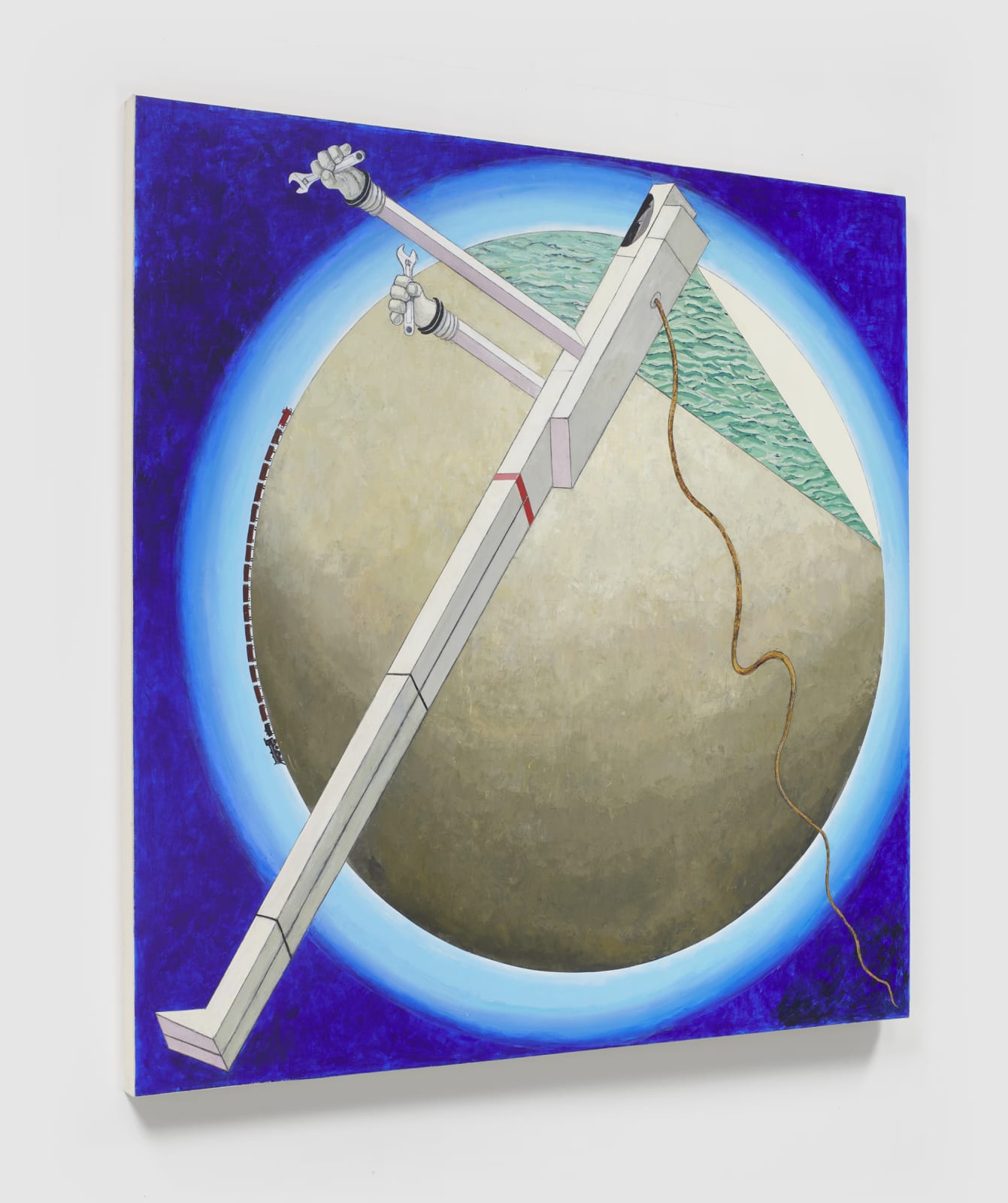-
Artworks







Astronaut: Sunrise (after El Lissitzky), 2020
Acrylic and mixed media on canvas49 1/2 x 49 in
125.7 x 124.5 cmSoldFurther images
In Astronaut: Sunrise and Astronaut: Sunset, both 2020, Larsen uses the lines and abstract forms of a 1924 composition by Lissitsky as springboards for the process of assembling planes to...In Astronaut: Sunrise and Astronaut: Sunset, both 2020,
Larsen uses the lines and abstract forms of a 1924 composition by Lissitsky as springboards for the process of assembling planes to construct figures in space. The resulting paintings each depict a planet undergoing a phase transition with an astronaut floating in the foreground, all rendered in reverse perspective. These vertigo-inducing spaces lack any implicit horizon line or a reliable vantage point. Larsen seeks to disorient the viewer and destabilize “fixed” perspective, in this case making visible the unseen dimensions of this cosmic narrative. About the sense of uncertainty conveyed in Larsen’s wryly humorous work, curator Veronica Roberts writes: “it is hard not to register the vulnerability of an astronaut floating in outer space with a pair of wrenches to perform whatever his mission entails. While early space exploration was once seen as a thrilling achievement, in 2020, the narrative around space travel has become more troubled. Perhaps Larsen has conjured our future, a time when the Earth is no longer habitable for humans, and the train is making a final round to pick up passengers hoping to rebuild their lives on another planet.”Exhibitions
Mernet Larsen, James Cohan Gallery: 48 Walker St., December 1, 2020 - January 23, 2021.1of 2













